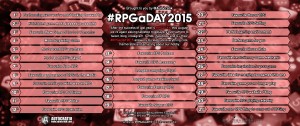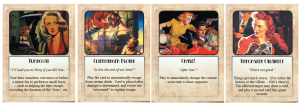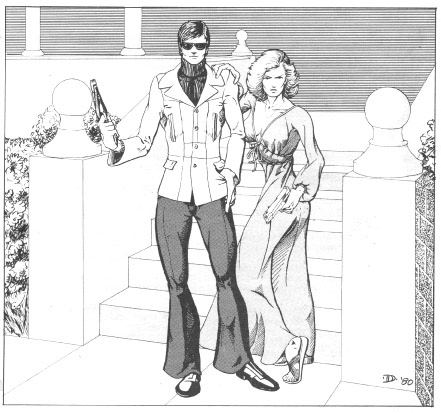 Today’s topic is Favorite RPG Accessory, which, apparently, is supposed to mean “something for RPG use which isn’t the game or its supplements.” Now, I suppose that I could use this entry to expound upon my love of tie-in-fiction (something I love so much I’ve released some for my own games, like Tales of the Far West, for example). Or I could geek out about soundtracks, which I use during play, and some companies have also released for RPG use (Pinnacle did music for Deadlands, for example, and we’ve done for Far West as well). But rather than do that, I think I’ll go with cards.
Today’s topic is Favorite RPG Accessory, which, apparently, is supposed to mean “something for RPG use which isn’t the game or its supplements.” Now, I suppose that I could use this entry to expound upon my love of tie-in-fiction (something I love so much I’ve released some for my own games, like Tales of the Far West, for example). Or I could geek out about soundtracks, which I use during play, and some companies have also released for RPG use (Pinnacle did music for Deadlands, for example, and we’ve done for Far West as well). But rather than do that, I think I’ll go with cards.
Back in the 1980s, a small company called Lion Rampant released a product called Whimsy Cards, which were a game play aid that allowed players to affect the story being told through play, by playing cards like “Unexpected Aid” or “Bad Tidings.” It was one of the first products that allowed players to step into the previously-walled-off role of the Game Master, and I loved them. When Lion Rampant evolved into White Wolf, the cards were expanded and rereleased in 1990 as Storypath Cards, coming in two decks: The Path of Intrigue and The Path of Horror, with cards thematically appropriate to those genres.
Sadly, both the Whimsy Cards and the Storypath Cards are long out of print. However, Pinnacle produces something similar: the Adventure Deck, which is sold as part of a two-pack with their Action Deck. The Action Deck is a standard 54-card poker-suite deck with jokers, for use in Savage Worlds‘ card-based initiative system, but The Adventure Deck is a whimsy/storycard-esque deck allowing players to affect the story. Savage Worlds licensees have even released their own Action Decks, thematically appropriate to their published campaigns — and Adamant is no exception — we released a pulp-based Thrilling Tales Adventure Deck, cards from which are illustrated below (click for detail).
So yeah — cards which allow players to affect the story. That’s my favorite RPG Accessory.
It seems that Dave Chapman likes cards as well, as you’ll see in today’s video entry:






